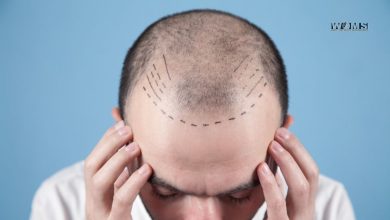Is Digital Eye Strain Giving You Dry Eyes, Blurred Vision, and Headaches?

There is a new eye problem that affects almost 70% of adults. And it all has to do with technology. Digital eye strain is a condition that is caused by interaction with digital screens. The symptoms that patients begin to experience are red eyes and dry eyes. They also experience headaches, fatigue, and disruption to sleep patterns. The reason is that we are moving our reading distances closer.
The typical reading distances are between 18 to 16 inches. But, with digital devices, we are working at 8 to 10 inches, which requires significantly more focusing power. And just like other muscles, when focus intensity goes up, it fatigues. The fatigue will cause general distress to the visual system. Also, when you focus on something up close, the blink rate goes down, leading to dryness.
Unfortunately, these issues affect adults and younger generations equally. Electronic devices are now ubiquitous in the education system. The pandemic has accelerated the phenomenon even further. That is why regular eye exams are an absolute must for adults and children alike. It will ensure that any vision-related problems are detected in time, so vision problems do not interfere with future life quality.
Dry Eyes
Dry eyes are one of the main issues of digital eye strain. It is what leads to the other issues of digital eye strain. Before we understand what dry eyes are, here are some myths.
- Dry eyes should be completely dry. When you have dry eyes, there is some amount of irritation in the eyes. When there is irritation in the eyes, the eye becomes watery. Thus, having a layer of water over your eyes is not an indication of healthy eyes.
- Dry eyes make it difficult to cry. Some people believe that crying is not possible when they have dry eyes. Crying has an emotional aspect. These tears are different from the moisture normally produced in the eyes.
- Dry eyes are about the loss of homeostasis of the tear film alone. Glares from lights, ghosting images, and difficulty focusing are all symptoms of dry eyes. Dry eyes are a mix of symptoms that cause an inferior quality of life.
What Causes Dry Eyes?
From an evolutionary point of view, eyes in early humans were used only for hunting and gathering food. With the advent of farming and the industrial revolution, the eyes were involved in more complicated activities. Yet, intricate work was limited to a few professionals, like craftsmen or jewelers. Today, the scenario is completely different. Everyone has moved to the digital world, focusing extensively on pixel-level details. Due to the spread of this phenomenon, dry eyes could be considered a modern epidemic.
The eyes have muscles. And every time you focus on something, these muscles have to move in and move out, move up, down, etc. They are dancing continuously. Chronic focusing causes eye muscles to spasm, which gives rise to headaches, migraines, and lethargy. People suffering from dry eyes have issues with the motility of the eye muscles. They also have emotional and psychological distress.
What Can You Do About Digital Eyestrain?
Digital eye strain or computer vision syndrome is caused by prolonged staring at devices. Staring at a screen for more than 2 hours at a stretch is considered prolonged. Here are some methods to combat computer vision syndrome.
- The computer screen needs to be an arm’s length away from you. It also needs to be 15 to 20 degrees below eye level. You need to be looking down and not up at your screen. It will take care of the neck and shoulder issues.
- The lights around the screen should be dimmer to avoid glare. The font on the screen should be increased, and an anti-glare screen can be used. These will reduce eye strain.
- Follow the 20-20-20 rule. Every 20 minutes, look 20 feet away for 20 seconds so the eye muscles can relax. Also, remember to blink a lot when you do this exercise. And, after every 2 hours of staring at a screen, you need to take a break for 15 minutes. When you follow this rule, make sure you focus on something at a distance. The change in distance will reset the messaging between the eye and the brain.
- Your optometrist can help you with appropriate eyewear for the computer screen. Even if you do not wear glasses, you can use blue-light-blocking lenses or glasses. There are eye drops that can help in maintaining the tear film. These clear up the vision and reduce eye fatigue.
Eye Exercises That You Can Do
- Rub your hands together for some time and put them over your eyes. It is known as cupping. The heat from your hands will relax the muscles in your eyes. Remember that your eyes feel fatigued because the muscles controlling your eyes are tired. Do not push against the eye itself, but just place them on the bony area around it.
- Look in different directions. Don’t look at anything up close. Look at something upwards for about 5 seconds and then look down for the same amount of time. Repeat this in all directions, including diagonal ones. This exercise stretches out your eye muscles. Do not do this for longer than 5 seconds in each direction, as it can add to the fatigue.
- Finally, do eye circles. Look in the distance and rotate your eyes slowly in a clockwise direction. After doing a few reps, do the same thing in the counterclockwise direction. You will feel a reduction in eye strain.
None of us can escape the digital world. We have to work within it, and for most of us, our livelihoods depend on it. That, however, does not mean that we do not have a choice when it comes to this modern-day epidemic. Armed with the information on how to combat it, we can have a high quality of life despite it.




